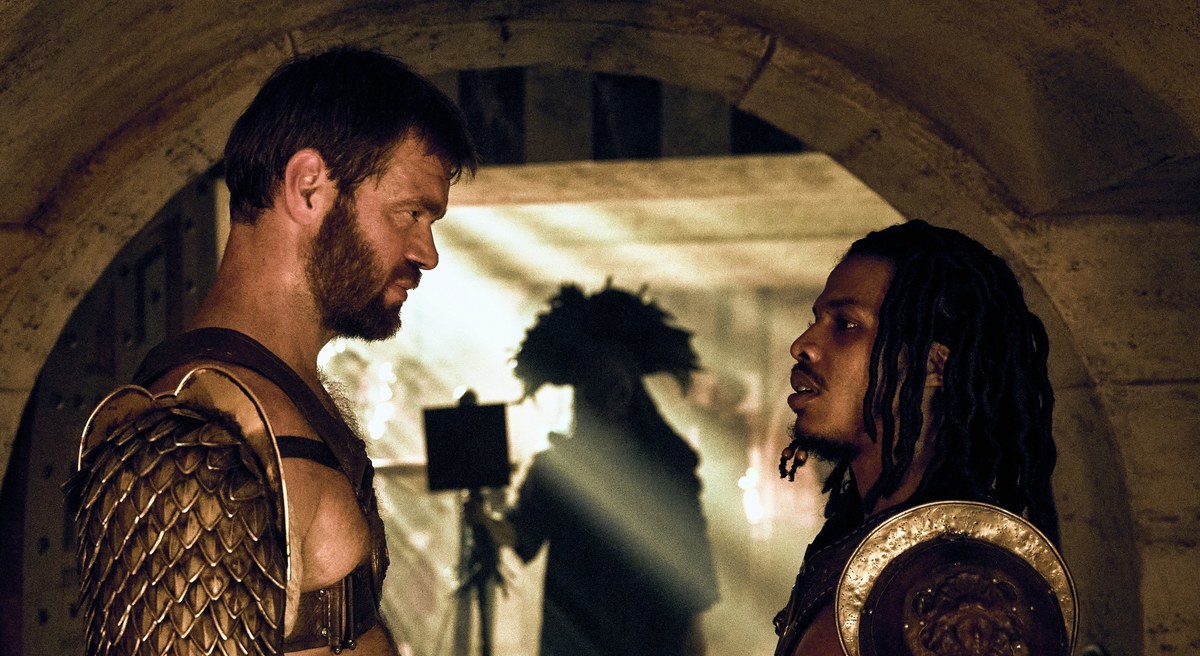DUBAI: British-Yemeni actor Moe Hashim (“Ted Lasso”) and Iceland’s Johannes Haukur Johannesson (“Succession”) spoke to Arab News recently about playing gladiator frenemies in new swords-and-sandal series “Those About to Die,” streaming in the Middle East on Starzplay.
The action-packed series set in Rome in 79 A.D., stars the legendary Anthony Hopkins as Emperor Vespasian, the founder of the Flavian dynasty, and is inspired by Daniel Mannix’s classic non-fiction book of the same name.

Johannes Haukur Johannesson and Moe Hashim star in ‘Those About to Die.’ (Courtesy of Starzplay)
Hashim, known for his minor role as footballer Moe Bumbercatch in hit Apple TV + series “Ted Lasso,” plays Kwame, a lion tracker, who has been taken to train as a gladiator and now faces an existence that means fighting for his life every day.
When asked what drew him to the series, Hashim said: “For me, (it was) Kwame where he was from and what he represents. And I was very excited because I was like: ‘This is a character that is not really spoken about or has been documented too much in the Roman Empire.’
“And when I did the research on North Africans and the influence they had in the Roman Empire, I was like: ‘Oh, I definitely want to be part of this for sure.’”
Johannesson, in turn, plays an imposing Norse gladiator who befriends Kwame in arena training. His main draw to the show was the grittiness of daily gladiator life. “I thought it was really beautiful to see how the gladiators, who were essentially prisoners made to fight till their death, fought for their lives daily, the way they found humanity and friendship, I thought that was really, really beautiful. That really stood out to me,” said Johannesson.
The show also marks the television directorial debut of blockbuster director Roland Emmerich (“Moonfall”, “The Day After Tomorrow,” “Independence Day”).
Said Johannesson: “Roland is a whirlwind to work with. He sweeps you along. He’s very intense, which is enjoyable. You sort of step on set and you just jump on the Roland Emmerich train. It’s an express train.
Added Hashim: “It was also fun getting to know him on a personal level. We practically did a tour of every restaurant in Rome, we had all types of pasta and, you know, during those dinners, you kind of get to see who Roland really is.
“A man at that point of his career still making time to listen to my stupid questions about ‘Independence Day’ and him being so happy to tell me about all the stories and willing to answer my questions.”























